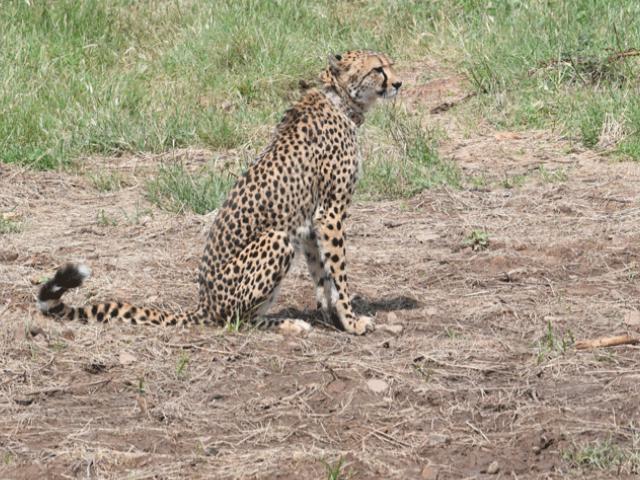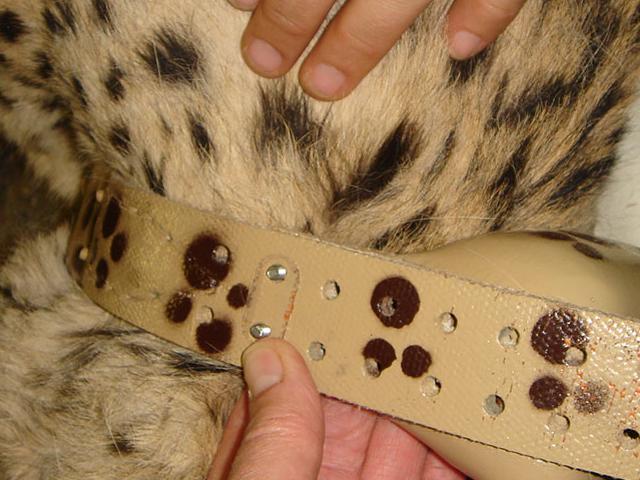When the cheetah project was planned , the presence of a large number of leopards in Kuno national park was considered as the biggest threat to the smaller spotted cats. But an altogether 'new predator'- unknown and unheard of- is stalking the African cheetahs in Kuno killing two cheetahs. Namibia to South Africa to Delhi, cheetah managers have expressed grave concern. It is a 400 gram satellite collar killing the cheetahs. The collars were placed around their neck to keep a track of the cheetahs translocated from the two African countries. African experts have recommended close monitoring of the cheetahs still in the enclosures in Kuno and replace them with better collars.
Collars Inflict Wounds
Two cheetahs- first Tejas in an enclosure and then Suraj in the open forest- died. Injuries over their neck were the common factor in both the cases. After initial confusion over the injuries, experts realized the death was caused by septicemia resulting from the radio collars worn around their necks in the prevailing wet conditions in the monsoons. Vincent van der Merwe, a South African cheetah metapopulation expert, and Laurie Marker of Cheetah Conservation Fund (CCF) have confirmed that the extreme wet conditions caused the radio collars worn by the cheetahs to create infections, leading to blood poisoning and septicemia. The deaths of the cheetahs, Suraj and Tejas, were not a result of wounds inflicted by other animals but were attributed to dermatitis, myiasis, and subsequent septicemia, experts claimed.
Also read: Back to Back Cheetah Deaths in Kuno: South African Expert Unhappy Over Communication Gap
The cats succumbed to a bacterial infection spread by a maggot infestation after neck injuries caused by the collars. Dr Laurie Marker, the founder and executive director of the Cheetah Conservation Fund (CCF) in Namibia, who examined the carcasses of the two cheetahs, the animals died due to septicemia, a serious infection that occurs when bacteria enter the bloodstream. She said that the infection was triggered by a maggot infestation under their radio collars, which were fitted with satellite transmitters weighing about 400 gram , reports US based Breaking News Network. Dr Marker said that the radio collars were too tight and too heavy for the cheetahs, and that they caused abrasions and wounds on their skin. She said that in the wet weather conditions in Kuno ,the moisture made the skin more prone to infection. She said that the radio collars should be removed or replaced with lighter ones that do not cause injury to the cheetahs, the bnn reports. Dr Marker also advised that the remaining cheetahs in Kuno national park should be monitored closely for any signs of illness or injury, and that they should be given regular health check-ups and vaccinations. She said that the CCF would continue to provide technical support and guidance to the Indian authorities on how to ensure the survival and well-being of the cheetahs, the news agency said.
Collar Replacement: Risky & Challenging Task
While there are four cheetahs still in the enclosures, now covered with thick vegetation after the onset of monsoon, there are 11 cheetahs in the open forest of Kuno after the death of Suraj. It has become difficult for the ground staff to monitor the cheetahs inside the enclosures from a distance. The thick green cover inside the bomas did not allow the camera traps to produce clear images. In all there were 20 cheetahs- 8 were translocated from Namibia in September last year while 12 were airlifted from South Africa in February this year.
Also read: Cheetahs In Kuno National Park : Future Tense !
Five of them have died including Tejas and Suraj. But the biggest challenge would be to replace the collars of the cheetahs roaming inside the 748 sq km forest of Kuno, especially in the monsoon. The replacement of collars would require tranquilising cheetahs, a task involving risks for the animals. For the cheetah managers, the innocent 400 gram collars seem to have turned out to be a bigger predator than leopard.




Comments
Post a Comment